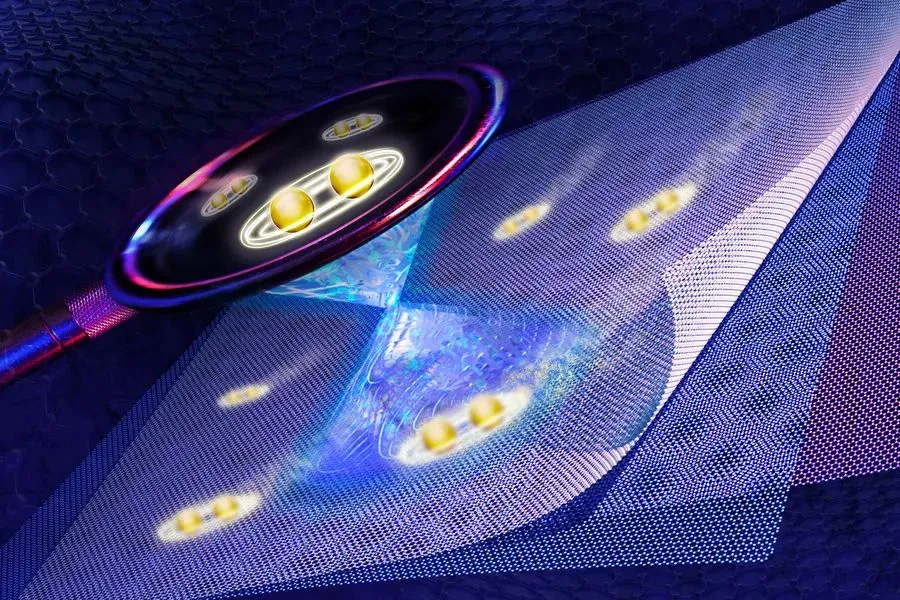Science
MIT Confirms Unconventional Superconductivity in Graphene Discovery

A research team at the Massachusetts Institute of Technology (MIT) has made a significant breakthrough in the study of graphene, confirming the presence of unconventional superconductivity in a particular configuration known as magic-angle twisted trilayer graphene (MATTG). This discovery marks the most direct evidence yet of the material’s superconducting capabilities, which could have profound implications for future technological advancements.
In their study, published recently, the researchers successfully measured the superconducting gap of MATTG. This gap is a crucial property that indicates how resilient a material’s superconducting state is at various temperatures. The findings reveal that MATTG’s superconducting gap differs markedly from that of traditional superconductors, suggesting that the mechanism of superconductivity in this material is also unconventional.
Shuwen Sun, a graduate student in MIT’s Department of Physics and co-lead author of the study, emphasized the importance of understanding these mechanisms. “There are many different mechanisms that can lead to superconductivity in materials,” Sun explained. “The superconducting gap gives us a clue to what kind of mechanism can lead to things like room-temperature superconductors that will eventually benefit human society.”
Innovative Experimental Platform Unveils New Insights
The researchers utilized a novel experimental platform that allows them to observe the superconducting gap in real-time as it emerges in two-dimensional materials. This groundbreaking approach enables the team to explore MATTG further and to map the superconducting gap in other two-dimensional materials, potentially identifying promising candidates for future superconducting technologies.
Pablo Jarillo-Herrero, the Cecil and Ida Green Professor of Physics at MIT and a key member of the Research Laboratory of Electronics, noted the significance of their findings. “Understanding one unconventional superconductor very well may trigger our understanding of the rest,” he stated. “This understanding may guide the design of superconductors that work at room temperature.”
The journey into the realm of magic-angle graphene began in 2018 when Jarillo-Herrero and his team first produced this unique material, which led to the discovery of its extraordinary properties. This pivotal research sparked a new field known as “twistronics,” focusing on the study of atomically thin and precisely twisted materials. Since then, the group has explored various configurations of magic-angle graphene, including multiple-layer structures, stacked and twisted forms of other two-dimensional materials, and their associated properties.
Implications for Future Technologies
The implications of these findings are vast. As researchers continue to investigate the superconducting properties of MATTG and similar materials, they hope to uncover insights that could lead to the development of superconductors capable of operating at room temperature. Such advancements could revolutionize numerous fields, from energy transmission to advanced computing and beyond.
The research conducted at MIT exemplifies the institution’s commitment to pushing the boundaries of scientific knowledge. As the team delves deeper into the properties of unconventional superconductors, the potential for transformative applications remains a tantalizing prospect for both the scientific community and society at large.
-

 Health3 months ago
Health3 months agoNeurologist Warns Excessive Use of Supplements Can Harm Brain
-

 Health3 months ago
Health3 months agoFiona Phillips’ Husband Shares Heartfelt Update on Her Alzheimer’s Journey
-

 Science2 months ago
Science2 months agoBrian Cox Addresses Claims of Alien Probe in 3I/ATLAS Discovery
-

 Science2 months ago
Science2 months agoNASA Investigates Unusual Comet 3I/ATLAS; New Findings Emerge
-

 Science1 month ago
Science1 month agoScientists Examine 3I/ATLAS: Alien Artifact or Cosmic Oddity?
-

 Entertainment5 months ago
Entertainment5 months agoKerry Katona Discusses Future Baby Plans and Brian McFadden’s Wedding
-

 Science1 month ago
Science1 month agoNASA Investigates Speedy Object 3I/ATLAS, Sparking Speculation
-

 Entertainment4 months ago
Entertainment4 months agoEmmerdale Faces Tension as Dylan and April’s Lives Hang in the Balance
-

 World3 months ago
World3 months agoCole Palmer’s Cryptic Message to Kobbie Mainoo Following Loan Talks
-

 Science1 month ago
Science1 month agoNASA Scientists Explore Origins of 3I/ATLAS, a Fast-Moving Visitor
-

 Entertainment2 months ago
Entertainment2 months agoLewis Cope Addresses Accusations of Dance Training Advantage
-

 Entertainment3 months ago
Entertainment3 months agoMajor Cast Changes at Coronation Street: Exits and Returns in 2025









